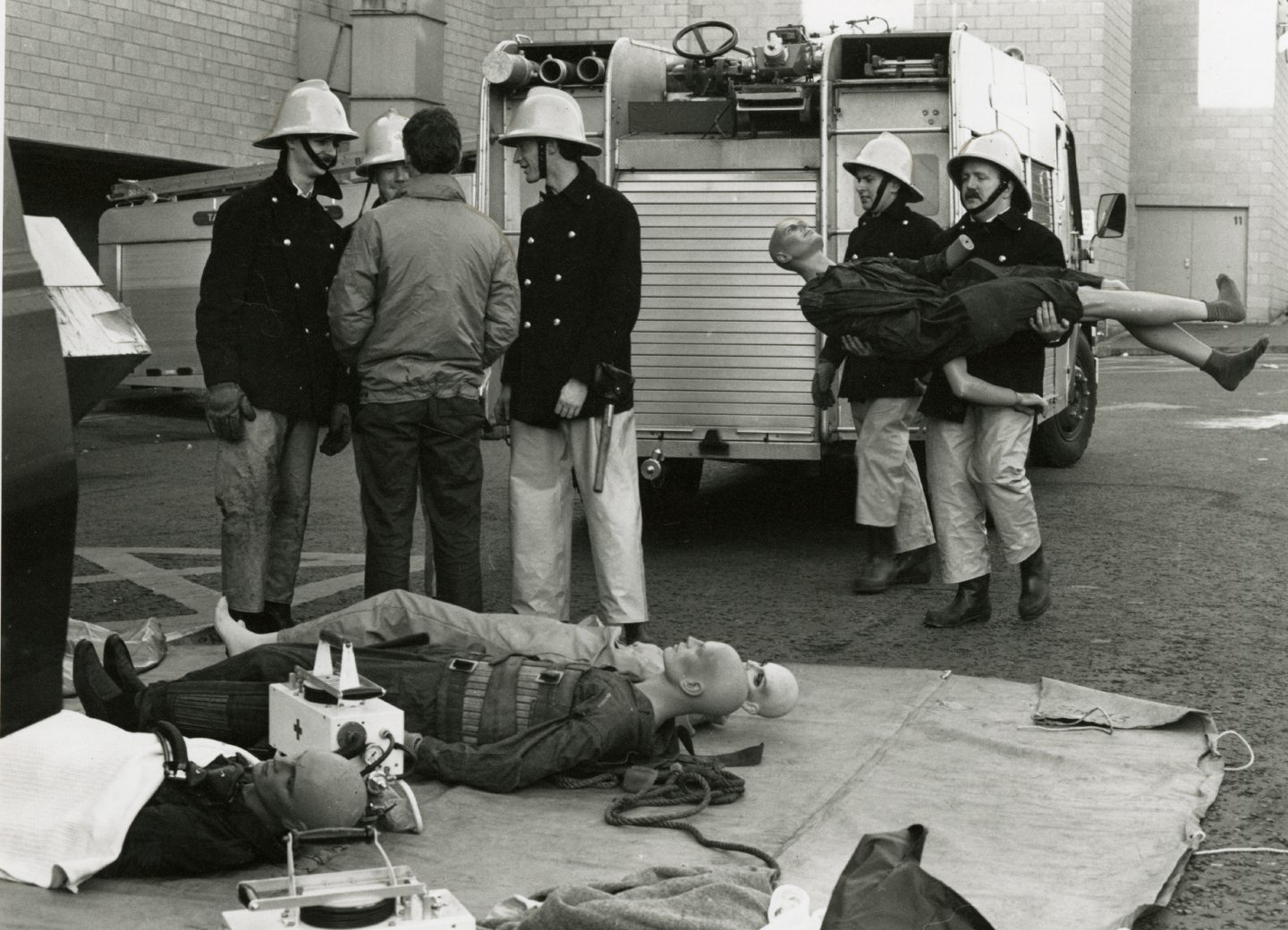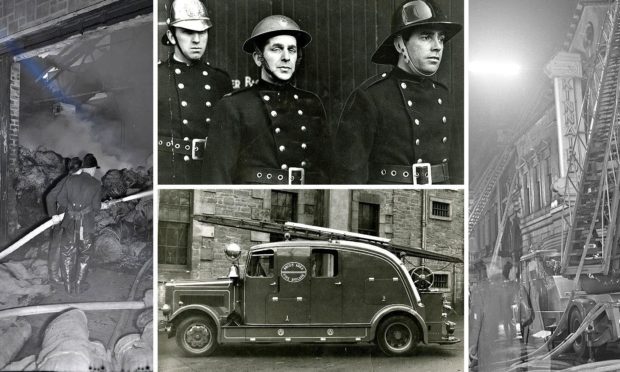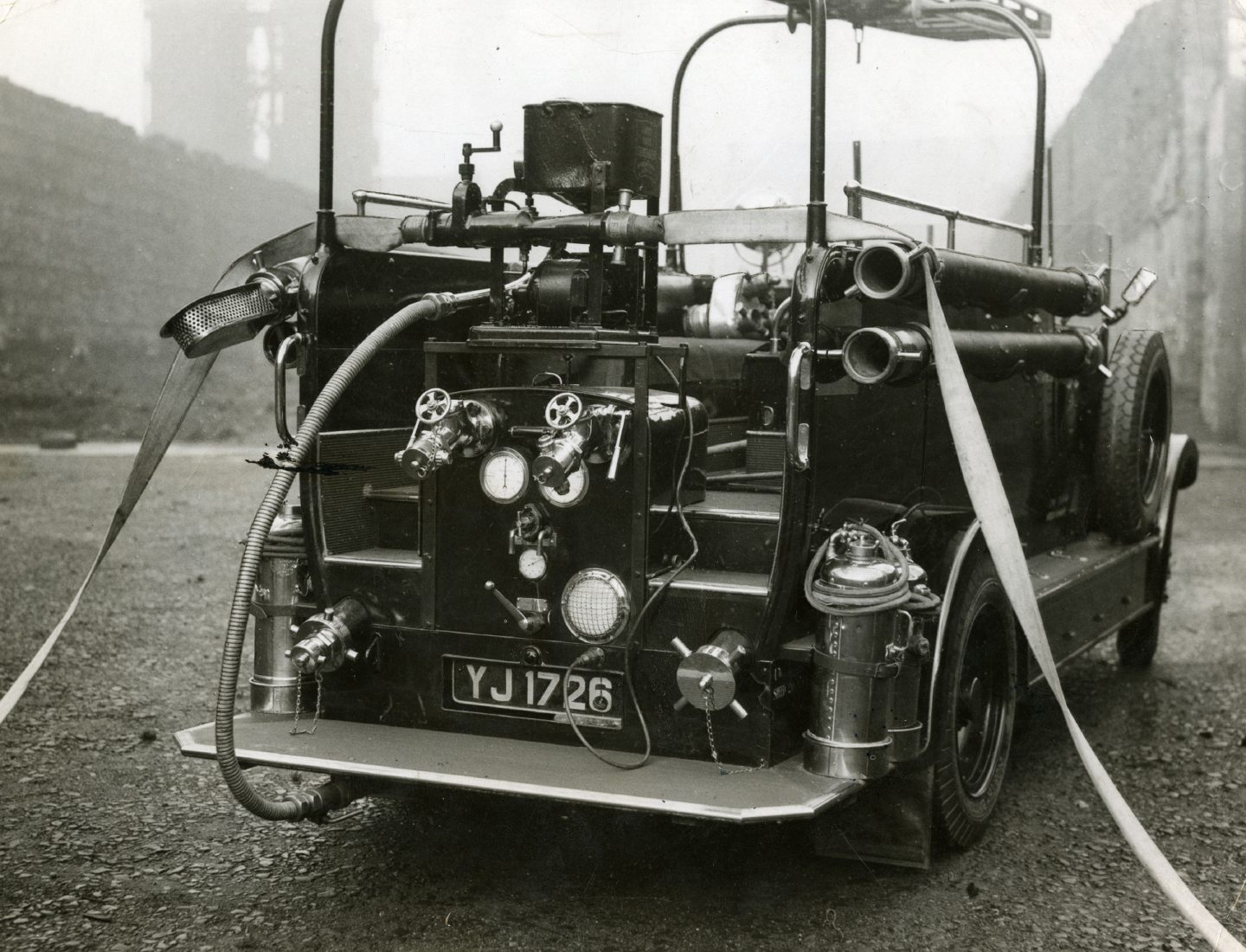Even with the new technologies of today, firefighting is still a risky vocation with some of the city’s bravest and most selfless taking on the life saving roles.
However fires have had to be fought since the beginning of time so what did the service look like back in the day when equipment wasn’t as advanced?
We take a look today at some of the changes from throughout the decades.
The 30s to 50s
We of course all know what a modern day fire engine looks like. Let’s be honest they are deliberately hard to miss with bright red colouring and its dominating size used to house all the appliances needed to help in any given situation.
However engines weren’t always so large and in fact the vehicle below is an example of what a standard fire engine looked like in the city in 1934.
As well as the engines having an overhaul, indeed so have the uniforms used by the firefighters of the time. While the uniform below may bare some resemblance to the more formal uniform sometimes worn by the fire service, they are drastically different to those worn by officers out on the front line in the 21st century.
Here the glossy black helmets worn by the fireman on the right was the latest in protective head-gear released in March 1949. Alongside the old type brass helmet and steel type introduced during the war are also shown.
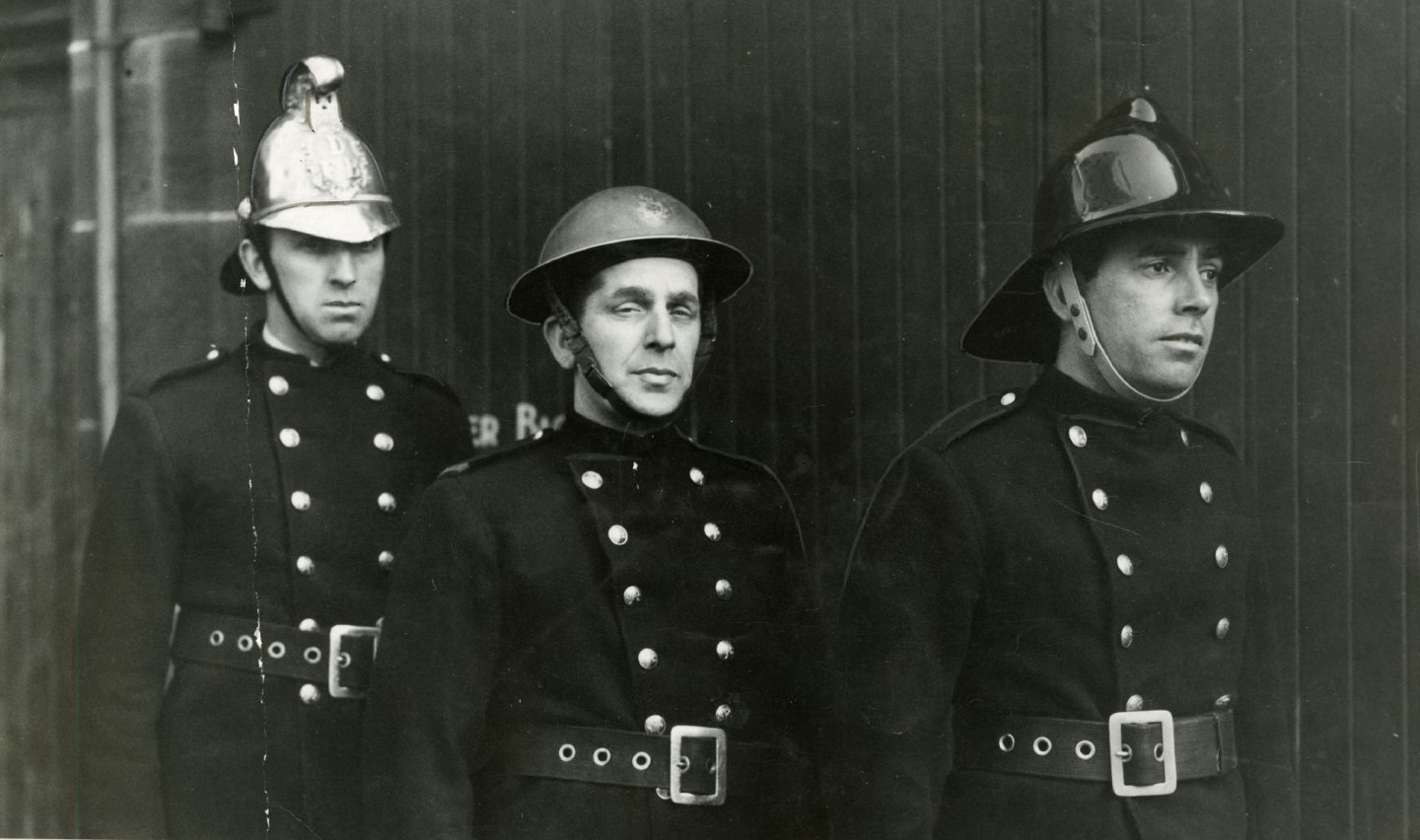
By the 1950’s fire engines had began becoming a bit grander with the below being an example from January 1950.
The whole vehicle was now enclosed and they were bigger in size, however the shape, which is almost reminiscent of a Volkswagen Beetle at the rear, is completely different from its modern day equivalent.
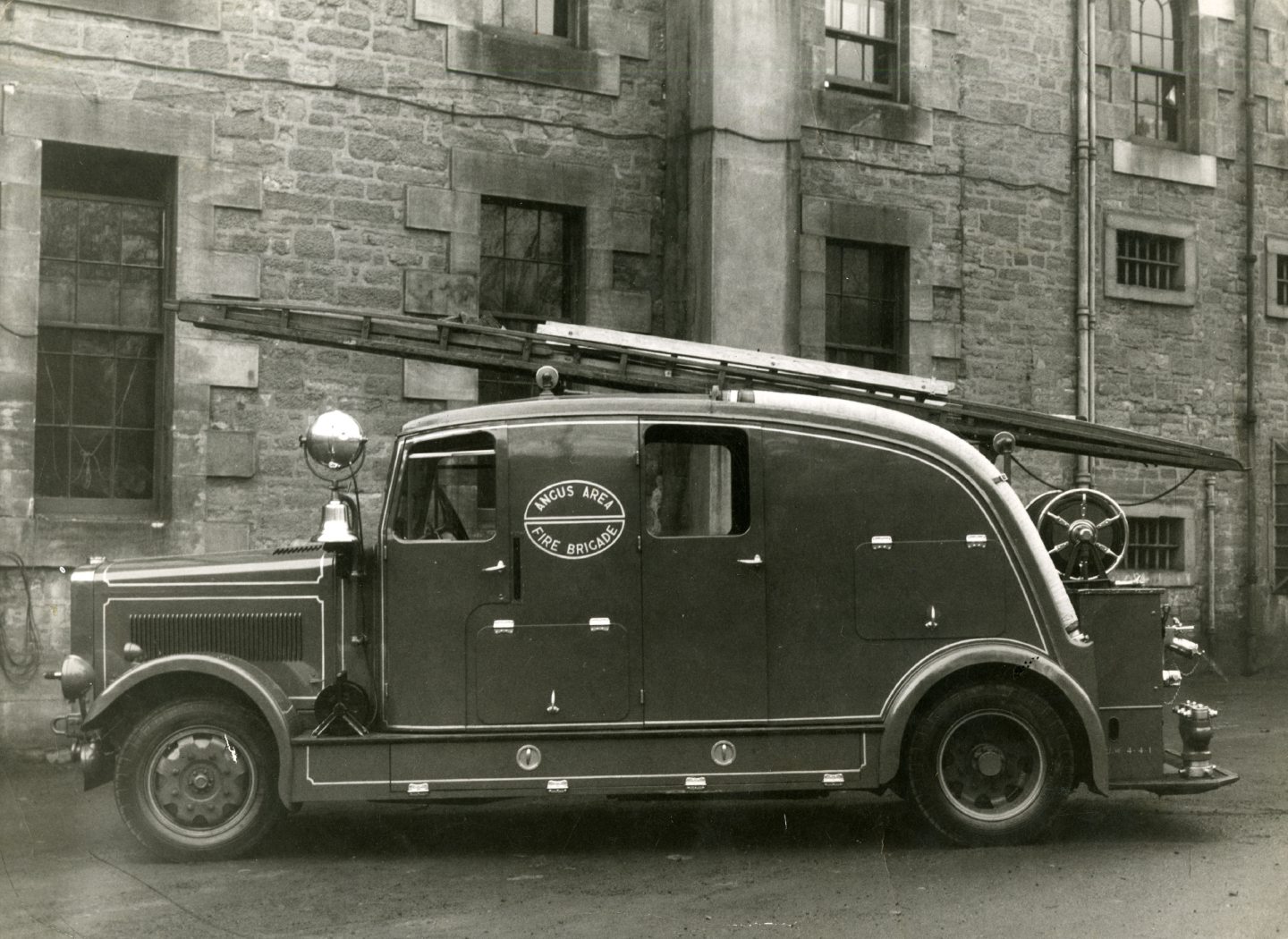
Dundee was of course the home of the jute industry for much of the 19 and early 20 century however the textile was highly flammable and the firefighters of the area tackled a number of blazes in the factories throughout the years.
Below a blaze at Halley’s Jute Mill is tackled with firemen seen dampening the site in June 1957.
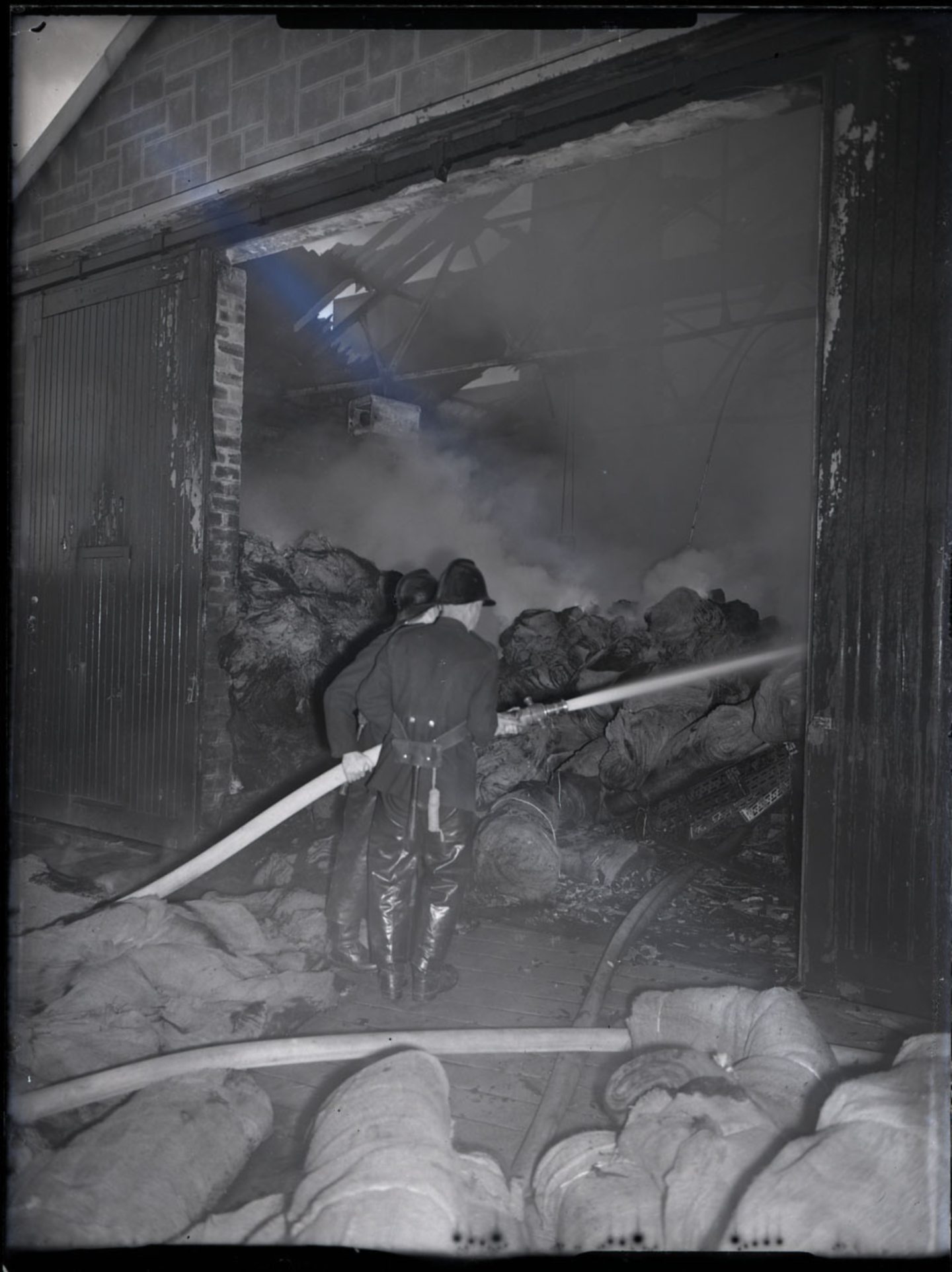
Firemen can be seen being fitted with breathing apparatus at Mid Wynd Works in September 1959, below, with the engines seen in the background looking much more like those that would be found in 2021.
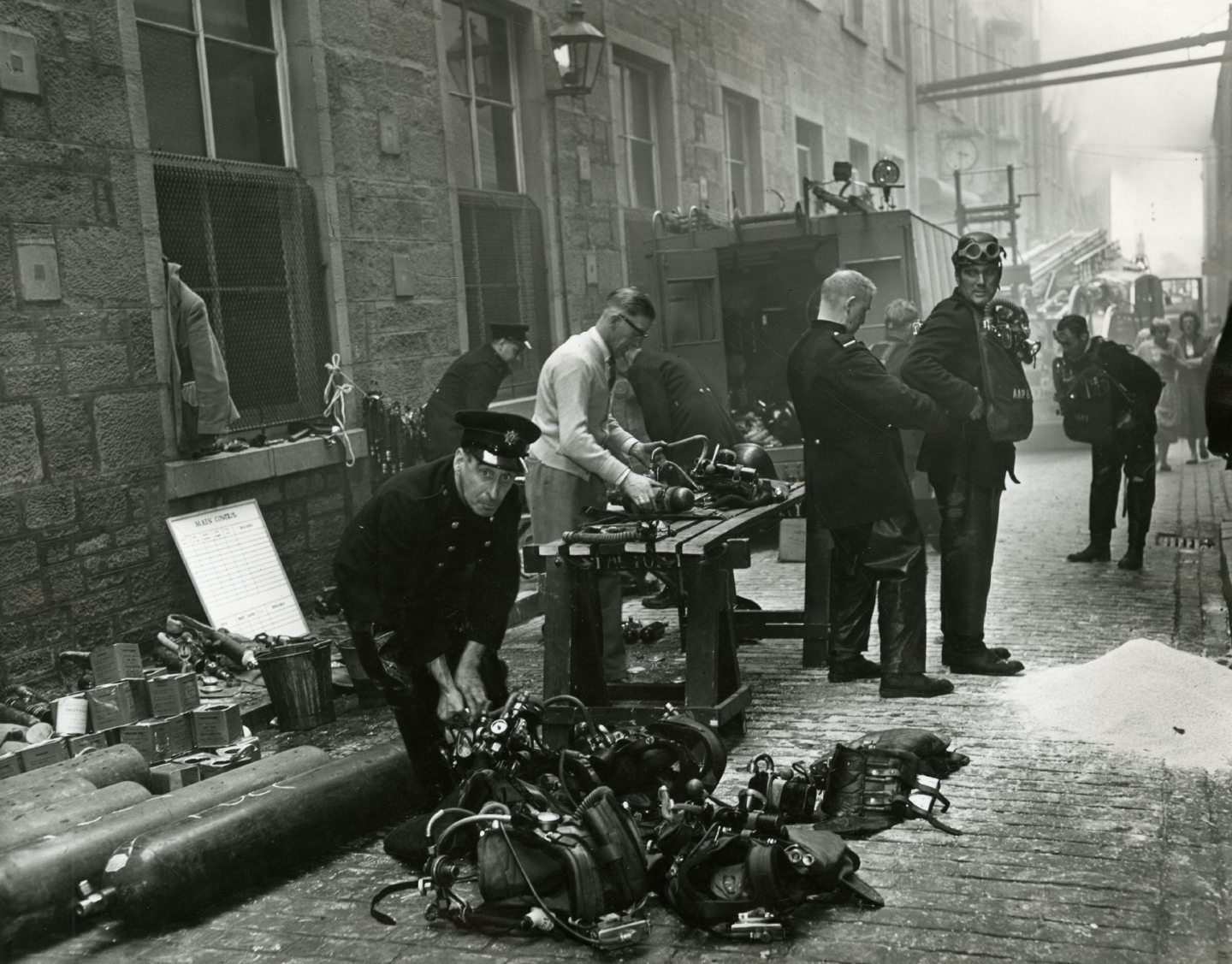
Breathing apparatus for firefighters has actually been used in the service since the late 1800s although a number of advances have continued to be made over the following decades.
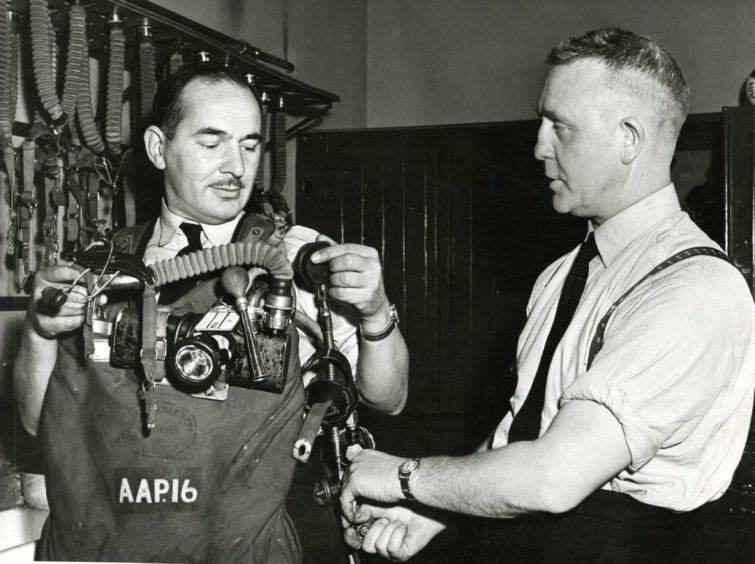
Here firemen M Henderson and W Clarke ensure their breathing apparatus is all in working order and adjust the fittings at Bell Street Fire Station in July 1959.
The 1960s onwards
Fireman Allan Hepburn of Hilltown Terrace in Dundee can be seen here wearing an example of firefighting breathing apparatus as it was in February 1963. Much of the face was left uncovered by the protective equipment used with only the head and mouth being covered here.
Large nose clamps can be seen being used to ensure smoke inhalation was kept to a minimum for those heading in to the flames.
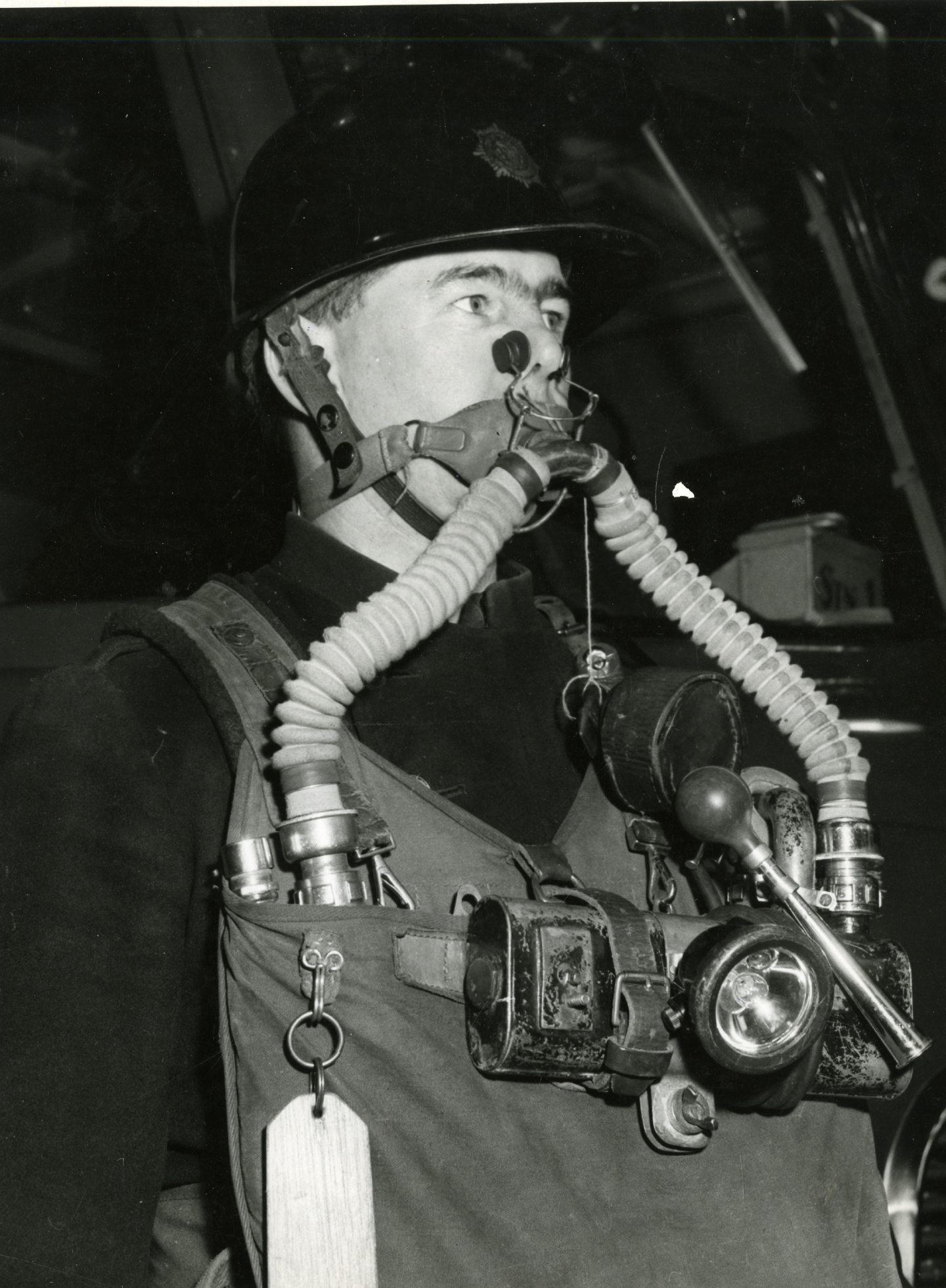
While the fire service is a much needed and respected career it does not come without its major risks even with the most top notch of technologies each incident they attend can be unpredictable and have disastrous consequences.
Here leading fireman, Bob Nicoll, waits for an ambulance after being injured by falling debris as he fought the blaze at the Kinnaird Picture House in January 1966.
The building was badly damaged by the fire with the remains being razed to the ground three years later with a car park for the city’s Overgate shopping centre now in its place.
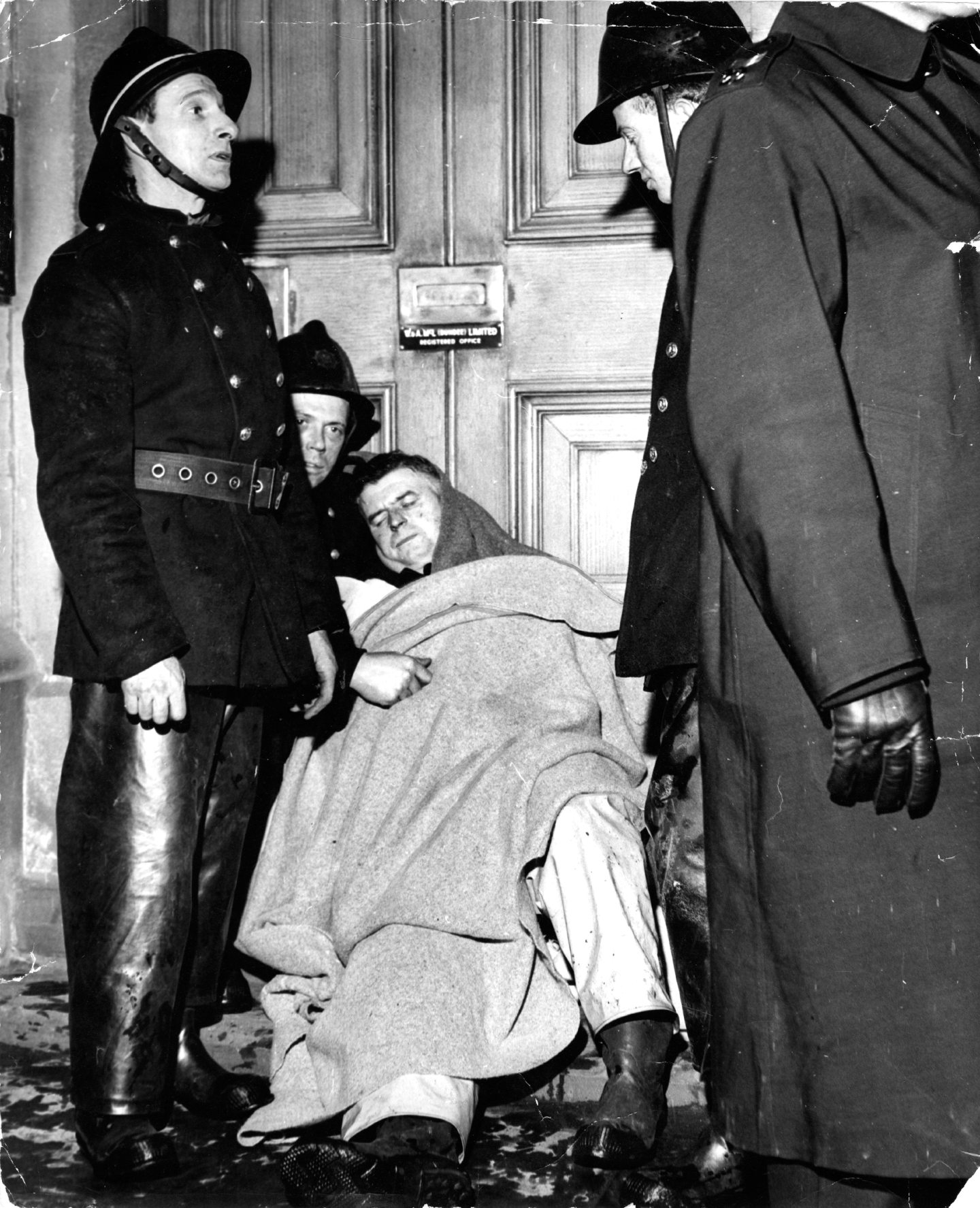
It was out with the old to make way for the new at the Brigade Workshops in Graham Street to Blackness Road which was the Brigade’s new HQ in April 1970.
Dundee’s old steam fire appliance was removed by a team of men with little ones looking on.
I wonder if the little chap in the picture went on to become a firefighter too?
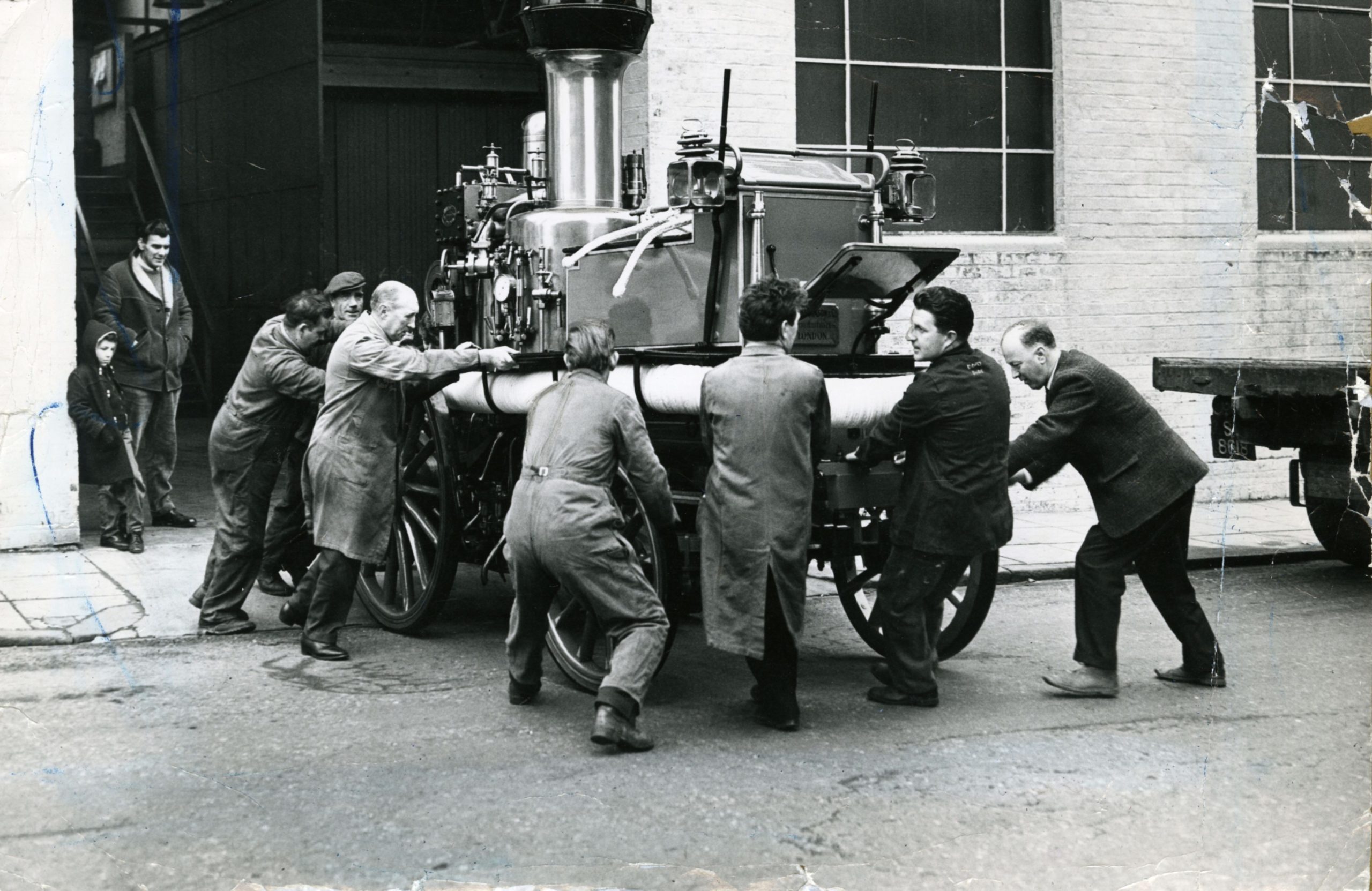
While the job they do is tough and well respected, Dundee firemen have not always felt that the risks they take were adequately represented on their pay packets.
Here strikers from the service are seen displaying placards and posters over disagreements over pay with posters saying: “Would you let your 18 year old son risk his life for £39 a week”.
The strikers who embarked on their demonstration in November 1977 were given a police escort.
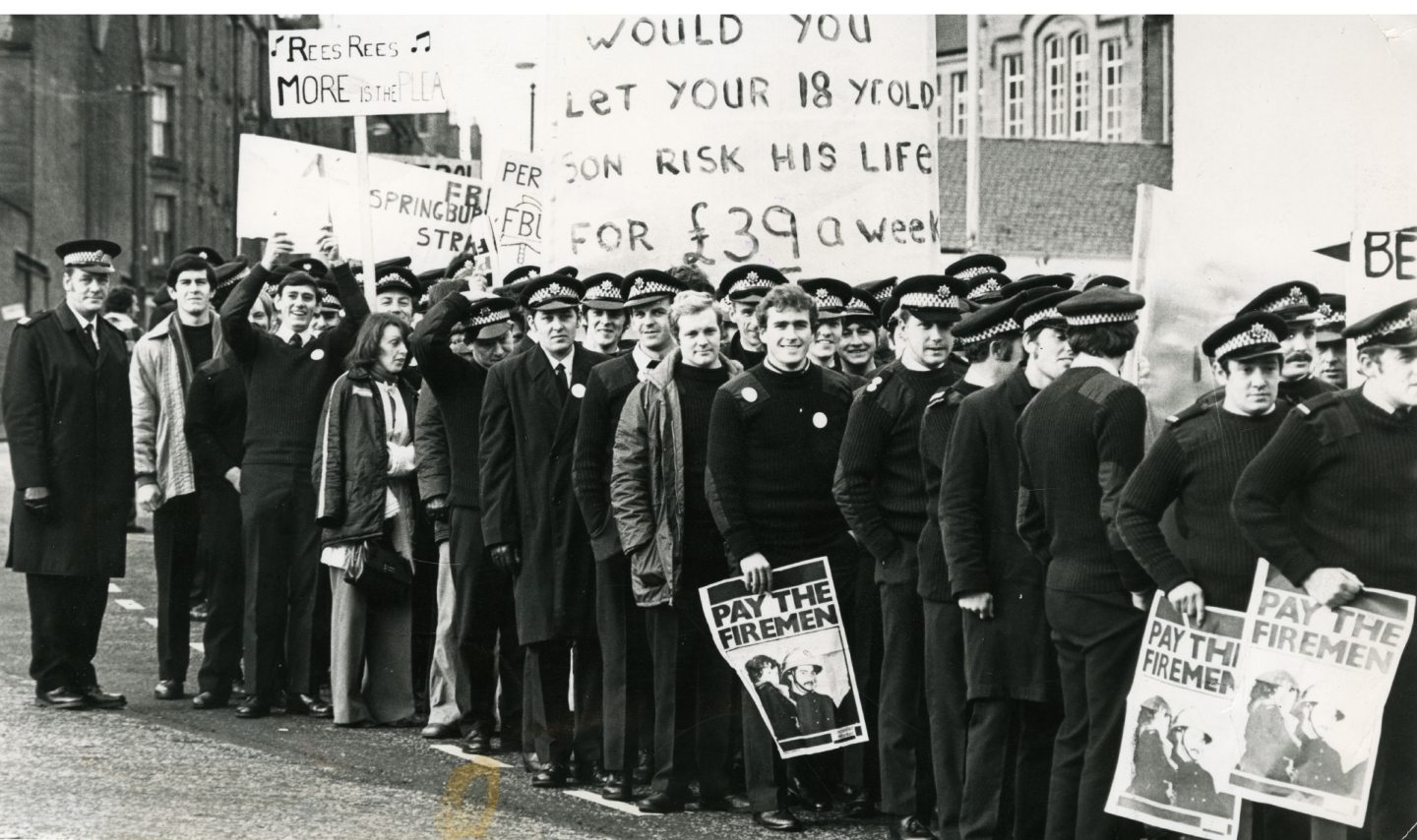
As we move on to the most recent image of our look back, although it was also taken over 30 years ago in November 1989, we start to see much more similarities with the uniforms worn today with the iconic yellow trousers being noticeable even in a black and white image.
Here one of the teams take part in a mock disaster training exercise using dummies at the Wellgate Centre.
Despite all of the changes it is clear the fire brigade provide an absolutely invaluable service to the Dundee community – and always has done.
